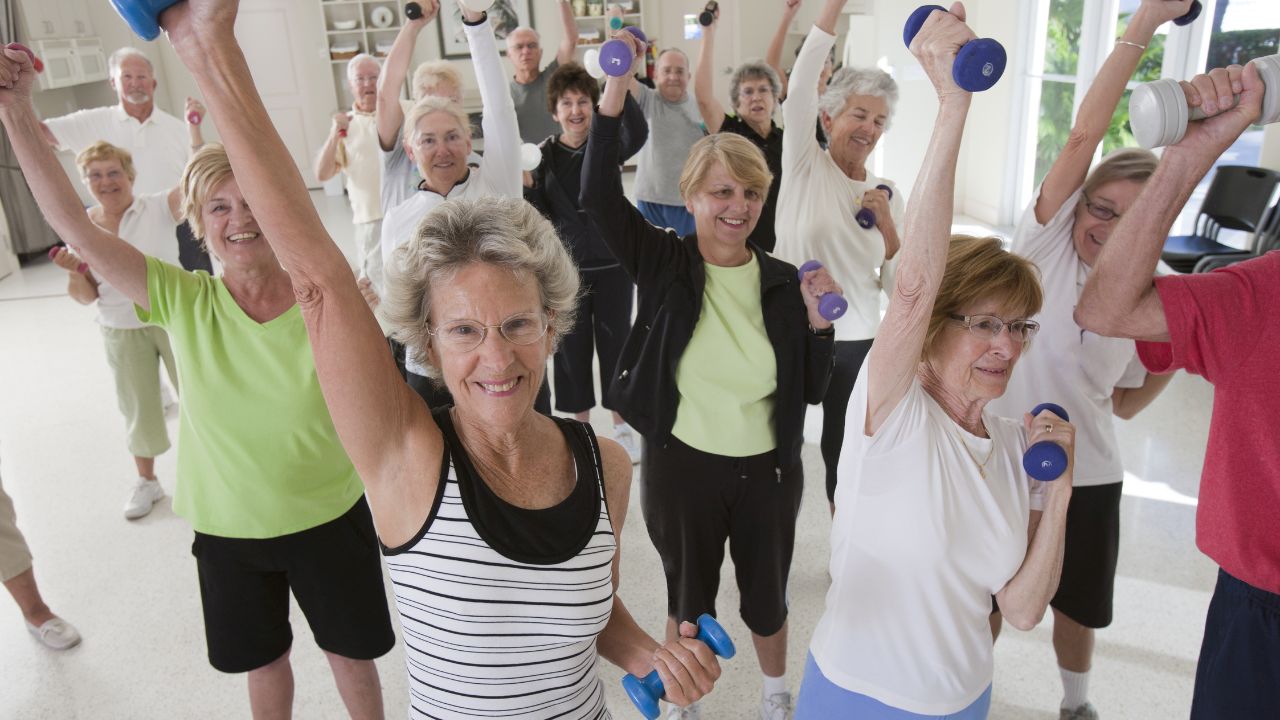
If you're trying to lose weight, you may be wondering which exercise is the best - strength training or cardiovascular exercise? There are many benefits to including cardio in your weight-loss program. It boosts mood, reduces some diseases risk, and burns calories. Cardio can help to lose weight and improve your physical and mental health. Read on to find out more. You'll be happy you did. Remember, the less likely that you gain weight the more you exercise.
Strength training
Cardio exercises are great for building lean muscle and losing weight, but they're not the only benefits to strength training. Three to five days of strength training per week is recommended for optimal results. But, it is important that you take a day off in between two days of strength training. To do this, you can perform exercises like pushups, squats, and lunges. These exercises can also be modified with the use of weight machines or exercise bands.

Cardiovascular exercise
If you are looking to lose weight, one of the best ways to burn calories is to engage in cardiovascular exercise. Cardiovascular exercise is any activity that involves total movement of the heart or lungs. Many daily activities involve some level of cardiovascular activity. But, there are other types of exercise as well, like brisk walking, or cycling. You can increase your metabolism and lose weight by doing these exercises regularly.
HIIT
HIIT cardio workouts burn more calories and build muscle than traditional aerobics or long runs. A HIIT workout requires less time and equipment than other types of exercise, and it's completely free. HIIT cardio workouts have high levels of intensity but are unsustainable over a long period of time. Unlike aerobics and long-distance runners, HIIT cardio doesn't place any stress on the knees or other joints.
Cycling
Although cycling is a great way to lose weight and keep it off, they are not as effective than other activities. Cycling doesn't target every muscle in the body equally. To maximize the benefits of your cycling workouts and to protect your bones, incorporate other physical activities, such as strength training, into your routine. Strength training is a great addition to cycling. It can build muscle and increase metabolism, which in turn means you burn more calories. These are some helpful tips to help you get started with your weight loss journey.

Swimming
Many runners who are on a weight-loss program wonder if swimming can help them. Many ask how to include swimming in their week. For some, swimming offers a welcome change from their regular five- to 6-mile runs. Some are just curious about how swimming can be used as a form or cross training. Swimming for weight loss is a great option. Let's take a look at the best.
FAQ
Why Exercise Is Important to Weight Loss?
The human body can be described as an amazing machine. It was designed to move. Our bodies are designed to move, whether we're running, swimming or biking, lifting weights, doing sports, jumping rope, walking or standing still.
Exercise can also help you lose weight and tone your muscles. This makes you feel good both physically and psychologically. Exercise is an important part of weight loss.
-
Exercise improves metabolism. When you exercise, your body uses energy. Every time you move, your heart beats faster, blood flows to your muscles, and your lungs absorb oxygen. These activities all require energy. Your metabolic rate increases, which means you'll burn more calories while exercising. You can calculate how many calories your body burns by doing physical activity.
-
Exercise reduces appetite. You will eat less when you exercise, and you will eat fewer calories during the day.
-
Exercise increases strength. Muscle tissue needs more energy to function than fat tissue. Therefore, if you build lean muscles mass, you will not need as much food to maintain your current weight.
-
Exercise releases endorphins. Endorphins make you smile. They are released when you exercise. Studies have shown that endorphins can block pain signals reaching your brain. This can give you a sense of well-being.
-
Exercise improves self-esteem. Regular exercise is associated with higher self-esteem. This leads to healthier lives.
If you want to lose weight, start with small changes. You can add one of these tips into your daily life today.
How Much Exercise is Required to Lose Weight?
Many factors influence how much exercise is needed to lose weight, such as age, gender, body size, and weight. However, generally speaking, most people need at least 30 minutes of moderate physical activity five days per week.
The American College of Sports Medicine recommends 150-minutes of moderately intense aerobic activity every week. It should be spread over three separate days.
If you are trying to lose 10 pounds, 300 minutes of moderate intensity exercise per week is a good goal. You can do this by walking fast, swimming laps or biking, as well as playing tennis, golfing and hiking, or jogging, running or other similar activities.
Consider doing 20 minutes of vigorous exercise thrice a week if you are just starting out. That could include activities like lifting weights, sprints, jumping rope, or fast walking.
Aerobic exercise also helps burn calories and build muscle mass. Muscles burn more calories than fat. Building muscle and losing weight could help you get there faster.
What foods help me lose more weight?
Consuming fewer calories is a great way to lose weight quickly. There are two methods to accomplish this.
-
Reduce how many calories you eat daily.
-
Get more exercise to increase your metabolism.
It's not difficult to cut down on the amount of calories you eat. Everywhere you turn, there are many calorie-dense fast foods. Here's a list to help you shed those extra kilos.
-
Beans are high on fiber and protein. They are low in calories, so they're a good choice for people who want to lower their caloric intake.
-
Oatmeal has low calories, but high levels of nutrients such as magnesium and potassium. Plus, it contains less sugar than other cereals.
-
Eggs are full of cholesterol and protein. Eating eggs once or twice a week can boost your metabolism, helping you burn more calories throughout the day.
-
Whole grain bread reduces hunger pangs. This can help you feel fuller and longer.
-
Dark chocolate is high in antioxidants, flavonoids and other substances that have been linked with lower blood pressure and better heart health.
-
Cottage cheese is rich in calcium which aids in bone strength. Cottage cheese is also high in calcium, which aids in bone strength.
-
Omega-3 fatty Acids are a key component of salmon. They promote brain development, and improve cardiovascular function.
-
Green tea is chock-full with catechins. These compounds fight cancer and boost metabolism.
-
Broccoli is an excellent source of folic acids, which helps to lower homocysteine levels. Homocysteine levels that are high have been linked to increased risks of heart disease and stroke.
-
Yogurt is a great way to add probiotics into your diet without loading up on added sugars. Probiotics are vital for good digestive health.
-
Berries can be a healthy snack choice that tastes great and is very nutritious. Blueberries, strawberries, blackberries, raspberries, and cranberries are all excellent sources of vitamins and minerals.
-
Avocados are full of healthy fats. A half avocado has only 80 calories and offers plenty of filling fiber and potassium.
-
Nuts can be enjoyed as a snack, but they are also rich in protein. Nuts include cashews (almonds), hazelnuts (pecans), walnuts, walnuts, and pistachios.
-
Sweet potatoes are another starchy crop that is rich in beta carotene. This makes your skin glow. Because of their higher beta carotene levels, orange sweet potatoes are particularly good.
How to Create an Exercise Routine?
You must first create a routine. You should know what you will do each week and how long. This helps you plan ahead and avoid procrastination.
Second, make sure that your workouts are varied. Exercise shouldn't be boring. Otherwise, you'll lose motivation.
It is important to track your progress. It's important to see how much weight you have lost or gained over time.
If you start off by losing weight, it's easy to lose motivation if you don't gain any additional weight. It's harder to stay motivated if you gain too many pounds.
Try to strike a balance in your weight loss and weight gain. You'll find it harder to exercise if you don't like where you are at the moment.
How long does a weight loss process take?
It takes time to lose weight. It can take six months to lose 10%.
You should not expect to lose weight overnight. Your body takes time to adapt to new diets.
This means that you need to slowly change your diet over a period of time, such as a few days or weeks.
Also, you should stop taking fad diets because most of them don't work. Instead, change your daily routine.
For example, if you normally eat unhealthy snacks late at night, then you should cut down on this habit.
Eat healthier meals earlier in evening. This will prevent you from snacking late at night.
It is important to drink lots of water throughout the day. Water helps to keep your body hydrated and prevents dehydration. Dehydration can make you feel tired and weak.
A lot of water throughout the day is a great way to stay energized.
Doing things that are relaxing can help you reduce stress. You could spend quality time with your loved ones.
You can also listen to music or read books.
These activities can help you relax from stressful situations. They can also help improve your moods and self-esteem.
So, when you're trying to lose weight, you should always think about your health first.
Your physical health is a sign of your overall health. So, if you want to get fit, you should start with proper nutrition and regular exercise.
Why would you want to lose weight before turning 40?
For people over 40, maintaining good health and fitness are essential. It is vital to find healthy ways to stay active throughout your lifetime. This means regular exercise and eating healthy, as well as not smoking and moderate alcohol.
It is also important for us to realize that our bodies will change with age. Our bones start to weaken, and our muscles start to shrink. It is possible to slow down the process of aging by taking good care of ourselves.
It is important to stay healthy and fit as you age. These include:
-
Better sleep
-
Better mood
-
Energy levels increase
-
Lower risk of getting cancer
-
A longer life
-
More independence
-
Better sex
-
Improved memory
-
Improved concentration
-
Greater circulation
-
Stronger immune system
-
Fewer aches and pains
What side effects can intermittent fasting have?
Intermittent fasting is safe and has no side effects. You might have minor problems if your plan is not well thought out.
You might feel irritable if you skip breakfast. Other symptoms include headaches, dizziness and fatigue as well as muscle cramps.
These symptoms typically disappear in a matter of days.
Statistics
- According to Harvard Health, it's estimated that a 155-pound (70-kg) person burns roughly 112 calories per 30 minutes of weight training (5). (healthline.com)
- Another study found that 24 weeks of weight training led to a 9% increase in metabolic rate among men, which equated to burning approximately 140 more calories per day. (healthline.com)
- A 12-week study in 20 women with obesity found that walking for 50–70 minutes 3 times per week reduced body fat and waist circumference by an average of 1.5% and 1.1 inches (2.8 cm), respectively (healthline.com)
- According to Harvard Health, it's estimated that a 155-pound (70-kg) person burns around 167 calories per 30 minutes of walking at a moderate pace of 4 mph (6.4 km/h) (5). (healthline.com)
External Links
How To
How to Intermittent Fasting
Intermittent fasting refers to a diet where you only eat one day per semaine, typically Monday through Friday. The goal is to decrease your overall calories and still get adequate nutrition. This helps you lose fat more quickly than if it were your normal meals for the entire week.
The most popular form of IF is to limit calories to certain days. This would mean that you skip breakfast each morning, and then eat whatever food you like throughout the day. It is possible to choose to have three smaller meals each day, rather than two large.
You can choose from many different types of intermittent fasting such as alternate day fasting (alternative day fasting), 5/2 fasts (8/4 fasts), 16/8 fasts, and so on. Each type of intermittent fasting has its pros and cons. Alternate Day Fasting is the easiest to begin because you don’t have to make significant changes in your life. However, for some people it can be difficult to follow a strict diet, so they may prefer to explore other options.
If you're looking to start an intermittent fasting routine, I recommend starting with alternate-day fasting. This will allow to slowly transition to more extreme fasting regimens without drastically changing your lifestyle.